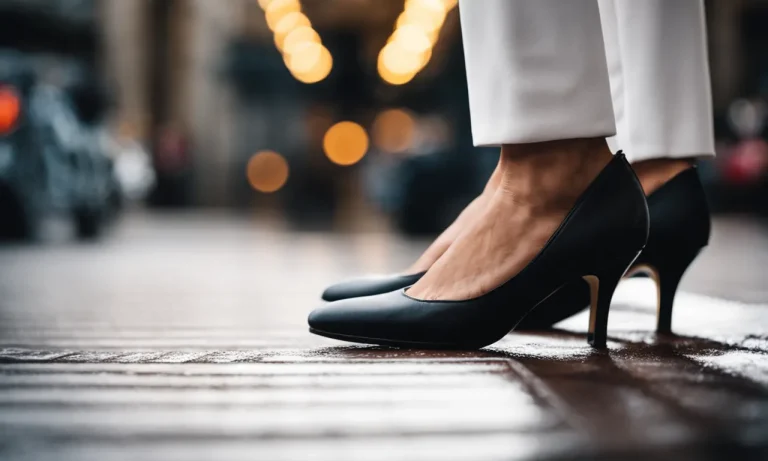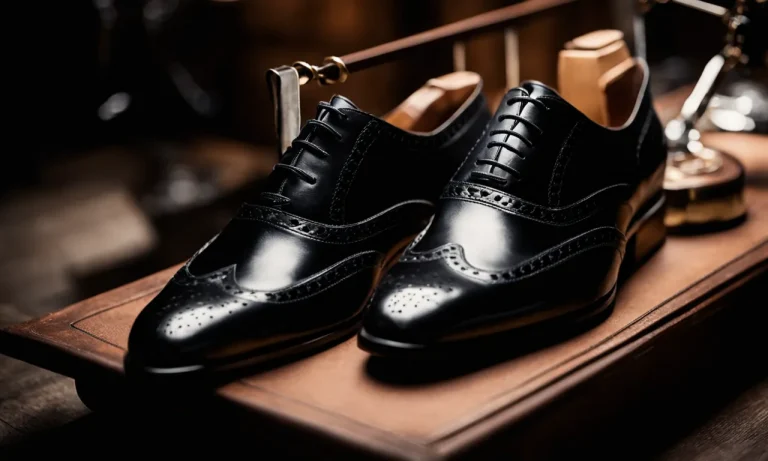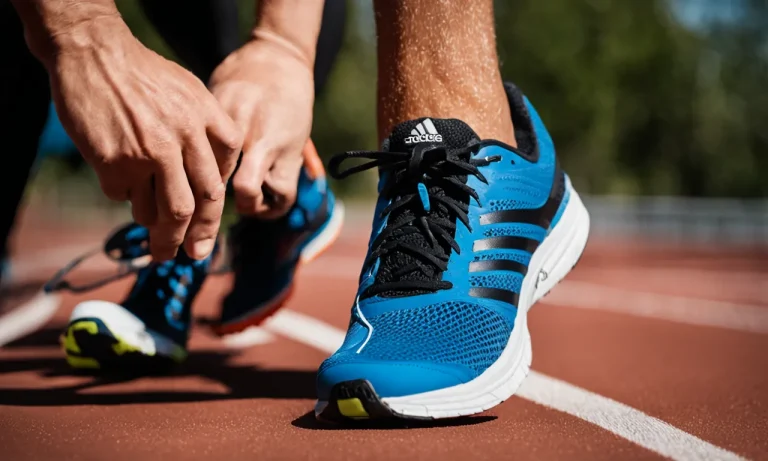Having the right shoe size is essential for comfort and avoiding foot problems. If your shoes are too small or too big, it can lead to blisters, bunions, arthritis, and other issues. This comprehensive guide will walk you through how to accurately measure your feet and determine your perfect shoe size.
If you’re short on time, here’s the quick answer: measure both feet while standing, from the back of the heel to the longest toe in centimeters or inches. Compare this length to a shoe size chart to find your size. It’s also a good idea to get your feet sized properly at a shoe store.
Why Shoe Size Matters
Choosing the right shoe size is crucial for several reasons. Whether you’re an athlete, a fashion enthusiast, or simply someone who values comfort, understanding why shoe size matters is essential. Here are a few key reasons:
Proper foot support
Wearing shoes that fit properly provides the necessary support for your feet. Ill-fitting shoes can lead to discomfort, pain, and even injuries. When your shoes are too tight, they can constrict blood flow and lead to blisters, calluses, and corns.
On the other hand, if your shoes are too loose, your feet may slide around, causing instability and potential foot problems. By wearing the right shoe size, you can ensure that your feet have the support they need to stay healthy and comfortable.
Preventing foot problems
Wearing the wrong shoe size can contribute to various foot problems. Conditions such as bunions, hammertoes, and ingrown toenails are often caused or aggravated by shoes that don’t fit correctly. Additionally, wearing shoes that are too narrow or too wide can cause alignment issues, leading to discomfort and pain in the feet, ankles, knees, and even the hips.
By wearing the right shoe size, you can minimize the risk of developing these common foot problems and maintain overall foot health.
Maximizing comfort
There’s nothing quite like slipping into a pair of comfortable shoes at the end of a long day. Choosing the right shoe size ensures that you can experience maximum comfort throughout the day. Shoes that are too small or too big can cause discomfort, hot spots, and blisters.
On the other hand, shoes that fit properly provide ample room for your toes to wiggle and support for your arches. When you wear shoes that fit well, you can go about your activities with ease and enjoy every step you take.
How to Measure Your Feet
Materials needed
Before you begin measuring your feet, make sure you have the following materials ready:
- A ruler or measuring tape
- A piece of paper
- A pen or pencil
Step-by-step process
Follow these steps to accurately measure your feet:
- Place the piece of paper on a flat surface, such as the floor or a table.
- Stand on the paper with your heel against a wall or straight edge.
- Using the pen or pencil, trace the outline of your foot on the paper.
- Measure the length of your foot from the longest toe to the back of your heel using the ruler or measuring tape.
- Measure the width of your foot by placing the ruler or measuring tape across the widest part of your foot.
Measuring tips
Here are some tips to ensure accurate measurements:
- Measure your feet at the end of the day when they are typically slightly larger.
- Wear the type of socks or stockings you plan to wear with the shoes you are measuring for.
- Measure both feet and use the larger measurement to determine your shoe size.
It’s important to note that shoe sizes can vary between different brands and styles. Therefore, it’s always a good idea to try on shoes before making a purchase, especially if you are buying online. If possible, check the brand’s website or customer reviews for any size recommendations or fitting guides.
Remember, comfort is key when it comes to finding the right size shoe for your feet!
Reading a Shoe Size Chart
US and UK sizing
When it comes to determining your shoe size, it’s important to understand the different sizing systems used around the world. In the United States and the United Kingdom, shoe sizes are typically measured in the same way, with slight variations.
The most common method of measuring shoe size is by using a Brannock device, which measures the length and width of your foot. The resulting measurement is then matched to a corresponding size on a shoe size chart.
This chart will typically display both US and UK sizes, making it easy to find the right fit for your feet.
European sizing
Europe uses a different shoe sizing system compared to the US and UK. European shoe sizes are measured in centimeters, which represents the length of the foot. To determine your European shoe size, you can use a conversion chart that converts your foot length into the corresponding European size.
These charts are widely available online and can help you find the perfect fit when shopping for European brands.
Converting sizes
If you come across a shoe size chart that uses a different sizing system than what you’re familiar with, don’t worry! Converting sizes is relatively straightforward. You can easily find conversion charts online that will help you determine the equivalent size in a different system.
For example, if you know your US size and want to find the corresponding European size, a conversion chart can provide you with the information you need. Just keep in mind that there may be slight variations between brands, so it’s always a good idea to try shoes on before making a purchase.
Half sizes
One common dilemma when it comes to shoe sizing is whether to go for a half size or not. Some people find that a half size up or down from their regular size provides a better fit. If you’re unsure whether you should opt for a half size, it’s recommended to try on both options and see which one feels more comfortable.
Keep in mind that different shoe brands may have slightly different sizing standards, so it’s always a good idea to refer to the specific brand’s size chart to ensure the best fit.
Remember, finding the right shoe size is crucial for your comfort and foot health. Take the time to measure your feet accurately and consult the appropriate size chart for the shoe brand you’re interested in.
By doing so, you’ll be able to confidently shop for shoes online or in-store, knowing that you’re getting the perfect fit for your feet!
Factors Affecting Shoe Size
When it comes to finding the perfect pair of shoes, it’s important to consider various factors that can affect your shoe size. These factors can vary from person to person, and understanding them can help ensure a comfortable fit. Here are some key factors to keep in mind:
Time of day
Believe it or not, your shoe size can actually change throughout the day. In the morning, your feet tend to be slightly smaller due to the absence of any swelling or fluid retention that may occur throughout the day.
As the day goes on, your feet may expand, so it’s recommended to measure your feet and try on shoes in the afternoon or evening for the most accurate fit.
Sock thickness
The thickness of your socks can also impact your shoe size. If you typically wear thicker socks, you may need to go up half a size to accommodate for the extra padding. On the other hand, if you usually wear thin socks or go sockless, you may find that your regular shoe size fits just right.
Foot conditions
Foot conditions such as bunions, hammertoes, or flat feet can affect the size and shape of your feet. These conditions may require you to choose shoes with a wider toe box or extra arch support, which can impact the size you need.
It’s essential to consider any specific needs your feet may have when determining your shoe size.
Weight changes
Weight fluctuations can also have an impact on your shoe size. If you have recently gained or lost weight, you may find that your feet have changed in size as well. It’s important to regularly measure your feet and reassess your shoe size to ensure a comfortable fit.
Pregnancy
During pregnancy, many women experience swelling in their feet and ankles due to fluid retention. This swelling can temporarily increase shoe size, so it’s common for pregnant women to need larger shoes during this time.
It’s advisable to choose shoes with adjustable features or opt for styles that provide extra room to accommodate for the changes in foot size.
Understanding the various factors that can affect your shoe size is crucial in finding the perfect fit. By considering factors such as the time of day, sock thickness, foot conditions, weight changes, and pregnancy, you can make more informed decisions when purchasing shoes and ensure optimal comfort.
When to Get Professionally Fitted
Trouble finding the right size
If you’ve been having trouble finding the right size shoe, it may be time to consider getting professionally fitted. Many people struggle with finding shoes that fit properly, which can lead to discomfort, pain, and even foot problems.
Professional shoe fitters are trained to measure your feet accurately and recommend the right size and style of shoes for your individual needs. They can take into account factors such as foot shape, arch type, and any specific foot conditions you may have.
Medical conditions
If you have certain medical conditions that affect your feet, such as bunions, plantar fasciitis, or diabetes, it is especially important to get professionally fitted. These conditions can cause changes in foot size and shape, as well as require specific features in shoes for optimal comfort and support.
A professional shoe fitting can help ensure that you are wearing shoes that accommodate your specific condition and reduce the risk of further complications.
Buying specialty shoes
When purchasing specialty shoes, such as athletic shoes for running or hiking boots, it is recommended to get professionally fitted. These types of shoes often have specific design features and technologies that are tailored to the activity they are intended for.
A professional shoe fitting can help you find the right size and style of specialty shoes that provide the necessary support, cushioning, and stability for your chosen activity.
Kids’ growing feet
If you have children with growing feet, it is important to get them professionally fitted for shoes regularly. Children’s feet can grow rapidly, and wearing ill-fitting shoes can cause discomfort and impact their foot development.
Professional shoe fitters can ensure that your child is wearing shoes that allow for proper growth and development, as well as provide the necessary support for their active lifestyles.
Remember, getting professionally fitted for shoes is not just about finding the right size, but also about finding the right fit for your unique foot shape and needs. It can greatly improve your overall comfort, reduce the risk of foot problems, and enhance your performance in various activities.
So, don’t hesitate to visit a professional shoe fitter and give your feet the attention they deserve!
Conclusion
Finding your accurate shoe size is a crucial step in achieving maximum comfort and avoiding foot issues. Take the time to properly measure both feet, consult a size chart, and consider getting professionally fitted if needed.
Knowing your true size will ensure your shoes provide the ideal support and feel great all day long.






